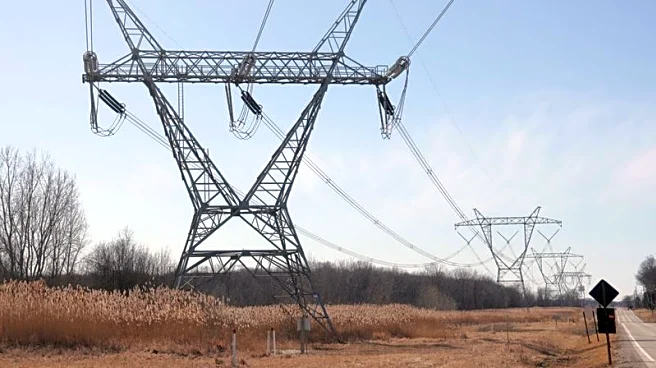What is the story about?
What's Happening?
Governor Gavin Newsom has signed a bill granting Uber and Lyft drivers in California the right to unionize as independent contractors. This legislative move is part of a broader agreement involving lawmakers, unions, and ride-hailing companies. The bill, which was signed on Friday, allows over 800,000 drivers to join a union and collectively bargain for improved pay and benefits. This development follows a similar measure passed by Massachusetts voters last fall, which also granted unionization rights to ride-hailing drivers. The agreement includes separate bills that lower insurance requirements for Uber and Lyft, alongside the union rights for drivers. Ramona Prieto, Uber's head of public policy for California, stated that the bills represent a compromise that reduces costs for riders while amplifying drivers' voices.
Why It's Important?
The signing of this bill marks a significant shift in labor rights for gig economy workers, particularly those employed by ride-hailing services like Uber and Lyft. By allowing drivers to unionize, the legislation aims to improve working conditions and provide a platform for drivers to negotiate better compensation and benefits. This move could set a precedent for other states considering similar measures, potentially leading to widespread changes in the gig economy. For Uber and Lyft, this could mean increased operational costs and changes in how they manage their workforce. However, it also presents an opportunity for these companies to foster a more stable and satisfied workforce, which could enhance service quality and customer satisfaction.
What's Next?
As the bill takes effect, Uber and Lyft drivers in California will begin organizing to form unions and start collective bargaining processes. The response from other states and the federal government will be closely watched, as this development could influence national labor policies regarding gig economy workers. Ride-hailing companies may need to adjust their business models to accommodate the new labor dynamics, potentially leading to changes in pricing, service offerings, and employment practices. Stakeholders, including labor unions and business groups, will likely engage in discussions to address the implications of this legislative change.
AI Generated Content
Do you find this article useful?















